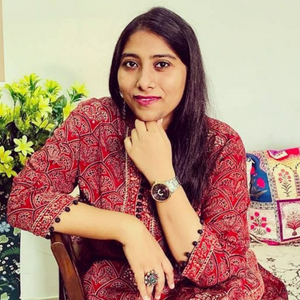Cast From The Past: Radcliffe and his blood-smeared line continue to haunt India since 1947
Story highlights
Cyril Radcliffe, the man who was assigned the task of drawing the borders of India and Pakistan, finished the task in 40 days and submitted the report by 12 August 1947
It was in March 1947 when Lord Louis Mountbatten was made the last viceroy of British India and assigned the tough task to give power back into the hands of a country which they had colonised for more than three hundred years. Mountbatten, who was still learning and understanding the sub-continent, had spoken against the division of the country and emphasised the need for a unified India.
In a radio broadcast on 4 June 1947, Viceroy Lord Mountbatten announced, "A statement will be read to you tonight giving the final decision of his Majesty’s Government as to the method by which power will be transferred from British to Indian hands. Nothing I have seen or heard in the past few weeks has shaken my firm opinion that with a reasonable measure of goodwill between the communities a unified India would be far the best solution of the problem."
However, the negotiations with Muslim League leader Muhammad Ali Jinnah, who was once considered “the Ambassador of Hindu-Muslim Unity" and shared differences with Gandhi over 'mixing religion with politics', ended in a disaster and it was soon made clear Partition was the only way out.
trending now
Pushing independence ten months earlier than expected, Mountbatten in early June announced 15 August 1947, as the date for the transfer of power.
40 days and hanging fate of 390 million people
The man chosen for the momentous task of striking a line between the country and defining the borders of India and Pakistan was a British judge, Cyril Radcliffe, who clearly had no understanding of the country's sociopolitical culture and had never visited India before.
After getting appointed as the chairman of the Border Commission, Radcliffe was granted merely 40 days to decide the fate of approximately 390 million people, who were about to lose their loved ones, houses, and wealth and endure horrifying scars of rape, brutalisation, killing and unnamed atrocities.
In the later years, while speaking to journalist Kuldip Nayar, Radcliffe said, “I had no alternative; the time at my disposal was so short that I could not do a better job. Given the same period, I would do the same thing. However, if I had two to three years, I might have improved on what I did."
“If aspirations of some people had not been fulfilled, the fault must be found in political arrangements with which I am not concerned," he had said.
WATCH | India to celebrate its 77th Independence day
Two days of eerie silence over new borders
Amid the riots, brutal killings, rape, looting and the greatest displacement of all time, historic speeches by Muhammad Ali Jinnah and Pt Jawaharlal Nehru declared Pakistan and India as independent nation-states on August 14 and 15. While independence was granted to people, their future remained blurred and locked inside the files where the actual border lines were drawn and the country was partitioned.
The confusion and mayhem in such circumstances are difficult to explain when people, especially those living in states like Punjab, which were divided, fail to understand if they are in India or Pakistan and whether they should run towards overwhelming refugee camps or wait for clarity from the authorities.
"While people knew that Punjab would be partitioned, it wasn’t until two days after independence that the fate of Lahore was announced. Until then, most people were unsure where Lahore would go. It was a strategic city because apart from being the capital of Punjab, it was divided between Hindu/Sikhs and Muslims almost equally," said Harleen Singh, founder of The Lost Heer Project while speaking to WION.
"I definitely think that keeping the exact borders secret until the last minute really added to the confusion and mayhem. In 2021, I was interviewing the refugee families in Gurdaspur which was briefly part of Pakistan for a few days before being allotted to India. This really caused a lot of violence in the region and a lot of Muslim women were kidnapped in the area and birthed many generations in Gurdaspur. Had people given a fair idea of what to expect with the new borders, there would have been much less violence," he added.
However, Radcliffe was intertwined in his own debate while giving Lahore to India. In the famous interview, he said, "I nearly gave you (India) Lahore. But then I realised that Pakistan would not have any large cities. I had already earmarked Calcutta for India.” The man, who had demarcated India from Pakistan, had also accepted that Lahore had Hindus and Sikhs.
But Jinnah was not happy with the "truncated" state that was given to him, which he had described as “a maimed, mutilated and moth-eaten” Pakistan. The question that lies deeply buried is why the map, which was apparently finalised on August 12, was not made public. Some argue that the step was restricted to ensure that riots and killings do not affect the Independence Day celebrations in India and Pakistan. However, unlike any other country, did India get a fair chance to celebrate the independence it had waited for for hundreds of years?
You can now write for wionews.com and be a part of the community. Share your stories and opinions with us here.
WATCH WION LIVE HERE


)
)
)
)
)
)
)
)
)
)
)
)
)
)
)
)